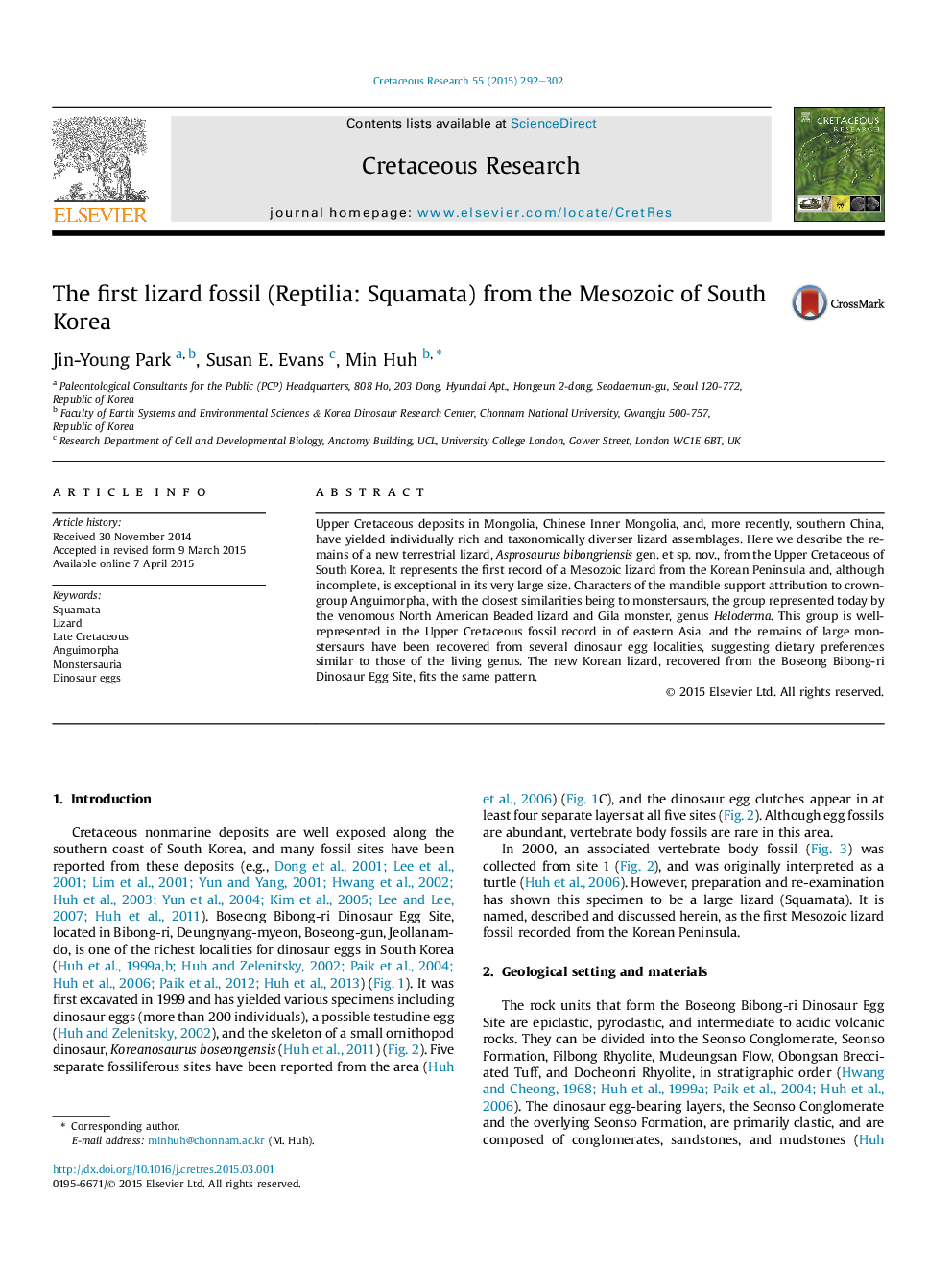| Article ID | Journal | Published Year | Pages | File Type |
|---|---|---|---|---|
| 4746912 | Cretaceous Research | 2015 | 11 Pages |
Upper Cretaceous deposits in Mongolia, Chinese Inner Mongolia, and, more recently, southern China, have yielded individually rich and taxonomically diverser lizard assemblages. Here we describe the remains of a new terrestrial lizard, Asprosaurus bibongriensis gen. et sp. nov., from the Upper Cretaceous of South Korea. It represents the first record of a Mesozoic lizard from the Korean Peninsula and, although incomplete, is exceptional in its very large size. Characters of the mandible support attribution to crown-group Anguimorpha, with the closest similarities being to monstersaurs, the group represented today by the venomous North American Beaded lizard and Gila monster, genus Heloderma. This group is well-represented in the Upper Cretaceous fossil record in of eastern Asia, and the remains of large monstersaurs have been recovered from several dinosaur egg localities, suggesting dietary preferences similar to those of the living genus. The new Korean lizard, recovered from the Boseong Bibong-ri Dinosaur Egg Site, fits the same pattern.
